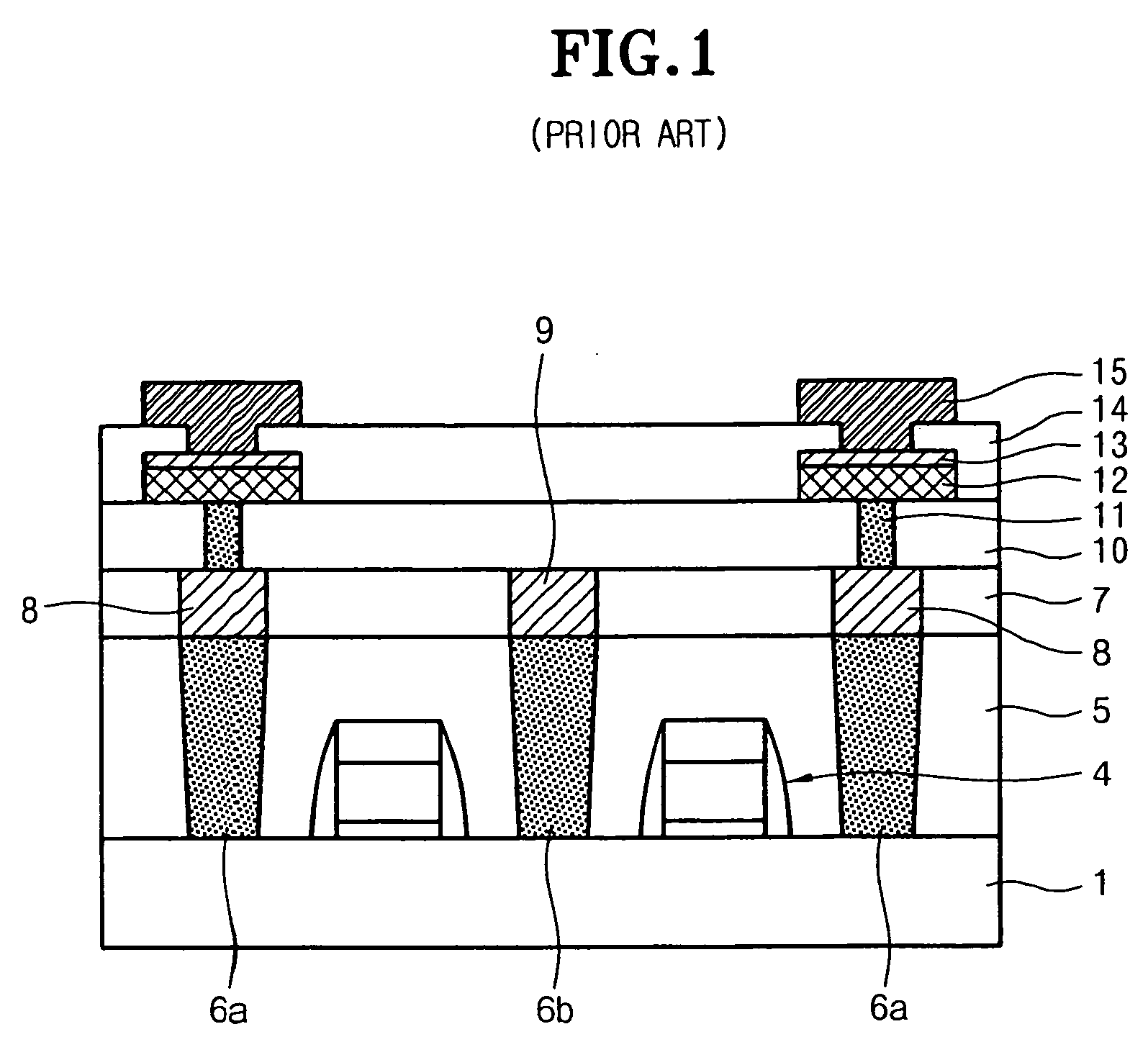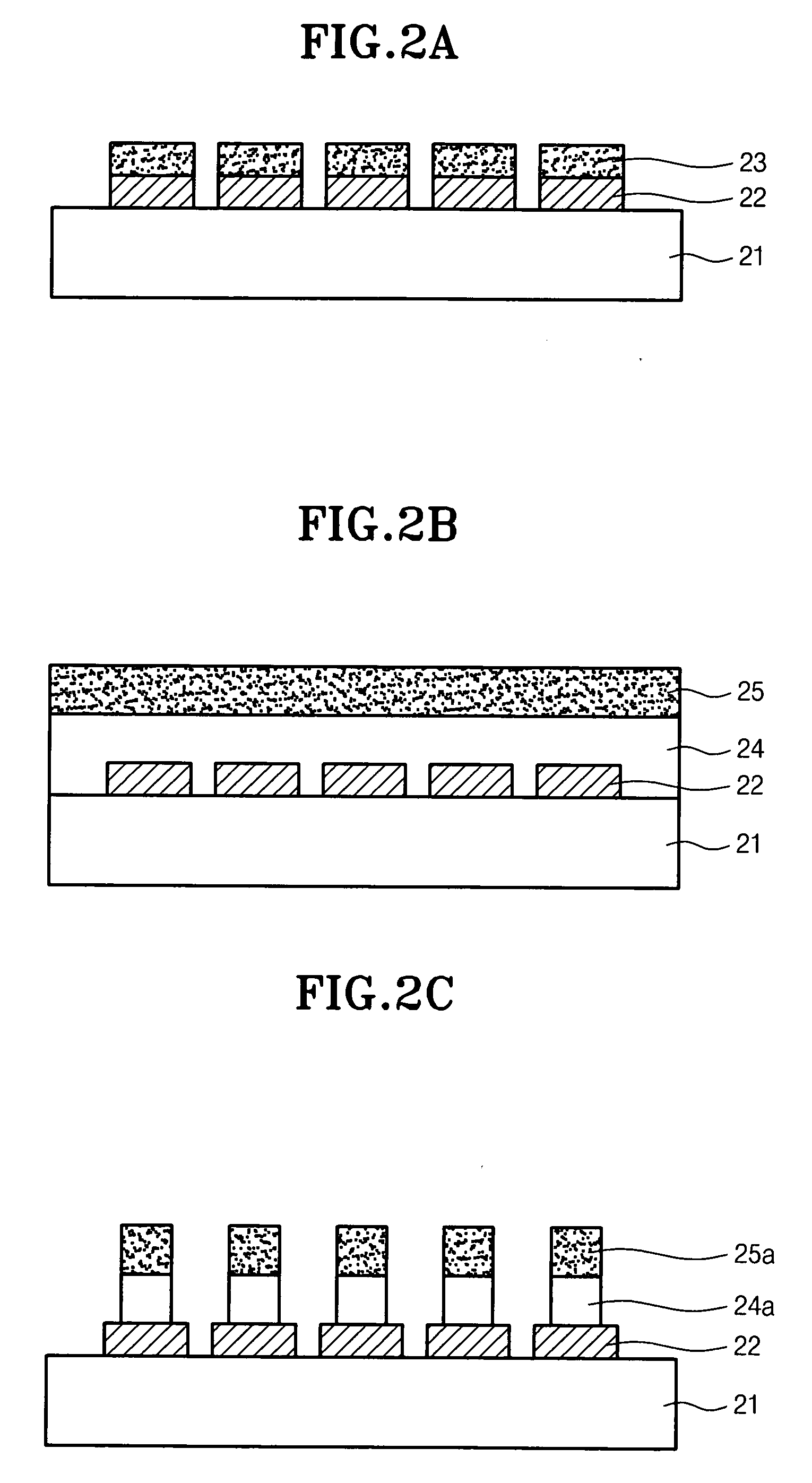Method of manufacturing a phase change RAM device utilizing reduced phase change current
a ram device and phase change technology, applied in the direction of semiconductor devices, electrical devices, nanotechnology, etc., can solve the problems requiring a high charge storage capability, and unable to achieve the high integration design of flash memories, so as to achieve the effect of reducing the current required
- Summary
- Abstract
- Description
- Claims
- Application Information
AI Technical Summary
Benefits of technology
Problems solved by technology
Method used
Image
Examples
Embodiment Construction
[0033] Hereinafter, the present invention will be described with reference to accompanying drawings.
[0034]FIGS. 2A to 2I are the cross-sectional views for illustrating the procedures of manufacturing a phase change RAM device according to an embodiment of the present invention.
[0035] Referring to FIG. 2A, a plurality of metal pads 22 are formed on the semiconductor substrate 21 by etching a metal layer deposited on the semiconductor substrate 21 using a plurality of mask patterns 23. More specifically, after preparing the semiconductor substrate 21 with an under layer (not shown) including a gate, a tungsten plug, and an interlayer insulating film formed thereon, the metal layer is deposited on the semiconductor substrate 21. After that, the mask patterns 23 are formed on the metal layer, and then the metal layer is etched by using the mask patterns 23, forming a plurality of metal pads 22.
[0036] Referring to FIG. 2B, after removing the mask 23, an oxide layer 24 is formed on the...
PUM
| Property | Measurement | Unit |
|---|---|---|
| current flow | aaaaa | aaaaa |
| size | aaaaa | aaaaa |
| semiconductor | aaaaa | aaaaa |
Abstract
Description
Claims
Application Information
 Login to View More
Login to View More - R&D
- Intellectual Property
- Life Sciences
- Materials
- Tech Scout
- Unparalleled Data Quality
- Higher Quality Content
- 60% Fewer Hallucinations
Browse by: Latest US Patents, China's latest patents, Technical Efficacy Thesaurus, Application Domain, Technology Topic, Popular Technical Reports.
© 2025 PatSnap. All rights reserved.Legal|Privacy policy|Modern Slavery Act Transparency Statement|Sitemap|About US| Contact US: help@patsnap.com



